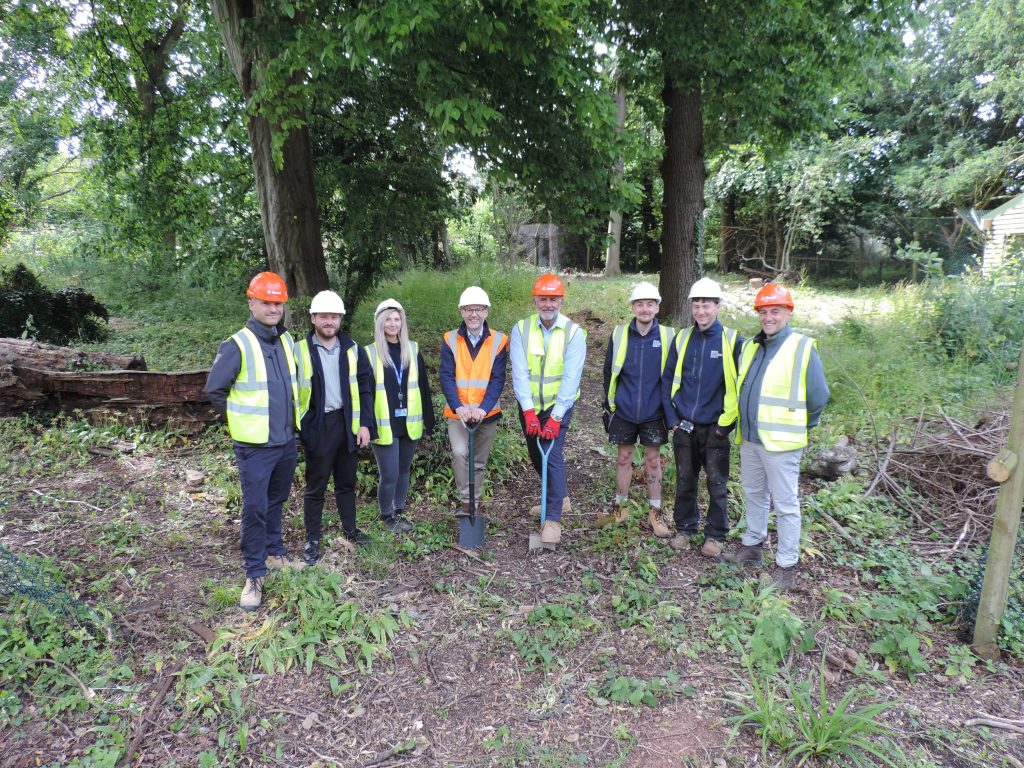Award-winning construction company Beard has started work on a cutting-edge habitat environment for Bristol Zoological Society.
The project, worth £9.2 million to Beard, will see the company’s Bristol office build the new Central African Forest habitat at Bristol Zoo Project – bringing together Critically Endangered western lowland gorillas and Endangered cherry-crowned mangabeys for the first time in a UK zoo.
Works will include the construction of the new gorilla house, along with a crocodile house and parrot aviary. Alongside their living quarters, Beard will be building extensive outdoor spaces for the gorillas which will be surrounded by a moat. An integrated viewing area and learning space will also be built, enabling visitors and school groups to get up close with the animals.
Beard has worked closely with specialist contractors and BZS throughout the design process to ensure the habitat meets the exacting requirements of each threatened species. This includes water treatment, heating, atmospheric conditions and the necessary plants required for the Critically Endangered slender-snouted crocodiles.
Meanwhile, Beard will complete extensive landscaping and use sympathetic and non-toxic plants and materials to replicate the dense forest and landscape of Equatorial Guinea. The gorillas will have more than four-times the space in their new home among the vast woodland of the zoo’s 136-acre site.
Alongside technical challenges, the remote location of the site, along with sensitive root and tree protection orders, means Beard will have the logistical challenge of access and managing deliveries. However, Beard has completed extensive planning, working with the zoo and all stakeholders to minimise disruption in live environments and ensure visitors, staff and animals remain safe – particularly to allow for the installation of services.
Bristol Zoo Project will remain open throughout the scheduled works, with construction due to be completed in spring 2025. The development is the first stage in the Society’s plan to create a new, modern conservation zoo, where up to 90% of species are both threatened and part of targeted conservation programmes.
Matt Cooper, Beard’s Bristol director, said: “It is a real privilege for Beard to be chosen to design and build this unique habitat which will deliver a conservation first in a UK zoo. It is an opportunity for us to showcase more than 130 years of experience in delivering complex and cutting edge spaces.
“We are working closely with Bristol Zoological Society, specialist contractors and all stakeholders to ensure this exciting vision and conservation project is fully realised. The Society shares our ethos of building with ambition and we look forward to working with them and all parties throughout this one-of-a-kind project.”
Justin Morris, Chief Executive of Bristol Zoological Society, said: “This is an incredibly exciting moment for us and a significant milestone in our vision to create a modern conservation zoo at Bristol Zoo Project. Central African Forest will see us create a new environment that will not only give our animals the opportunity to live in spaces more closely reflecting their natural habitats, it will also help to raise vital awareness of the threats these precious species are facing around the world.
“Currently, 78% of the animals we care for are both threatened, and part of targeted conservation programmes. Our aim is for this to rise to 90% of species by 2035.
“We have ambitious plans for the future, and this is just the beginning. Following the completion of CAF, we will also be creating a new Central African Savannah habitat, new visitor facilities and a Conservation Campus for students studying to become conservationists. This work will be delivered in phases over the next few years. We hope our visitors, partners and supporters will join us on this journey.”
Brian Zimmerman, Director of Conservation and Science at Bristol Zoological Society, said: “All of the mammals, birds, reptiles and fish that will live in Central African Forest are classified as threatened in the wild. The creation of this habitat not only presents a unique opportunity for us to bring these wonderful creatures together and expand our conservation work, it also enables us to participate in, and lead, managed breeding programmes, which will help to protect them in the future.”
For more information, please visit www.beardconstruction.co.uk. To find out more about Bristol Zoo Project and the Bristol Zoological Society, please visit www.bristolzoo.org.uk.


